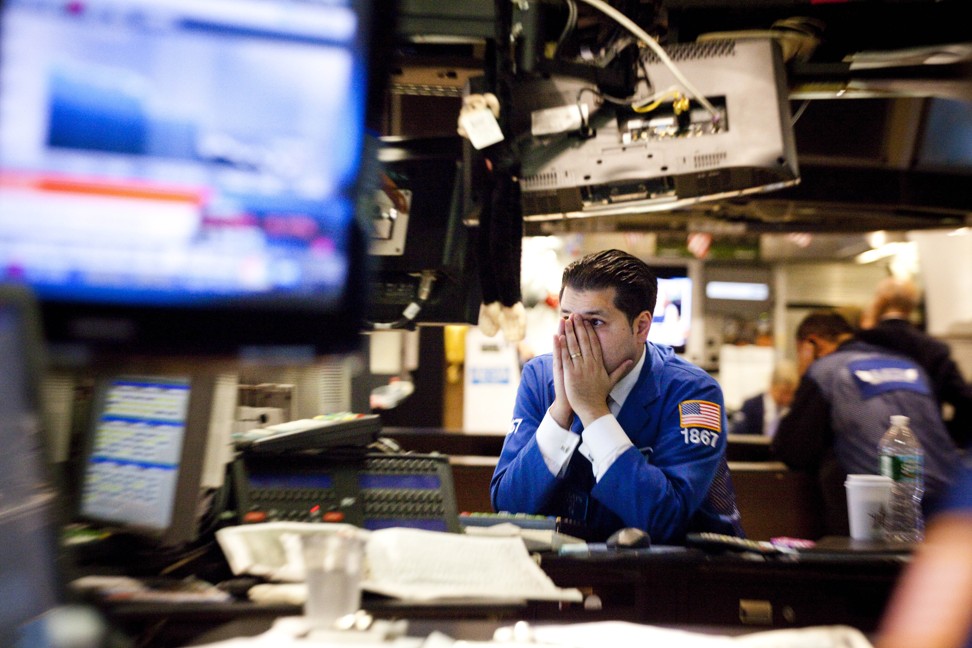
The chill in global markets is coming, so there’s no point dithering over the hard news
The world’s major central banks must show strong leadership and firm resolve to return global interest rates to pre-2008 crisis levels.

Having thrown in everything including the kitchen sink to resuscitate global recovery in the past nine years, central banks have their work cut out restoring better order to the world’s monetary stage.
A return to more normal policymaking is long overdue and, so far, they seem to be making a mess of it. Dithering by the US Federal Reserve, the European Central Bank and the Bank of England is sending all sorts of mixed messages to markets. It is raising the risk of increased volatility, adverse price shocks and the market floundering in confusion.
We have seen ample evidence of this in recent weeks as the Fed’s indecision on policy going forward is denting US dollar confidence in a major way.
Meanwhile, the ECB’s vacillation on when to pull the trigger to tighter policy is causing ructions for the euro, European stocks and bonds. It is time to put an end to the uncertainty and throw better light on the approaching global monetary squeeze.

A reality check is looming for markets and central banks seem extremely reluctant to carry the can. In the long run, interest rates and bond yields are heading higher, borrowing costs are set to surge and economic and financial market confidence will feel the chill. There is no excuse for delay.
How central banks manage the transition is critical. Sadly, there is no manual on how to move forward. Any candid central banker would readily admit the journey into quantitative easing was bad enough and the product of major guesswork. But the switch to so-called “quantitative tightening” and its implied withdrawal of vital stimulus pose even greater perils for policymakers. They are flying blind into a fog.
While quantitative easing has been a time of plenty for equity markets, quantitative tightening and the removal of excess easy money could easily end up as a major tipping point for investors. The temptation for central banks to tread carefully may seem reasonable, but at some stage they have to commit to “normalisation” to avoid being trapped in a never-ending loop of zero-interest-rate dependency.

Central banks must be frank, open and honest with the markets and communicate their intentions in the clearest possible way.
A bevy of Fed speakers singing from different song sheets is of no use if it ends up blurring the message on US rates. Deciphering oblique communiques and filling in the gaps is the last thing markets need right now and could end up hugely counterproductive.
A robust timetable for reasonable tightening must be adhered to. The Fed has dragged its feet over quantitative tightening since the infamous “taper tantrum” back in May 2013 when global markets freaked out at the suggestion that the Fed could bring its bond-buying programme to an early close. Ever since then, the Fed has been walking on eggshells over its monetary clawback intentions.
Likewise, the ECB is currently playing peek-a-boo with the markets over the likely end of European super stimulus, hinting at a possible window for closure between October and December this year. The Fed and the ECB both need to be much more explicit so markets can make positive plans for the future.
The encouraging news is the global macroeconomic picture has been on the mend for quite a while. Central bankers now need to forget about second-guessing the business cycle and focus on achieving the right levels of interest rates and global money to support stable, non-inflationary growth over the long term.
Interest rates stuck close to zero per cent in the major industrialised economies remain inconsistent with that end right now. Central bankers must transcend their fears about recession and financial doom and gloom in the short term and provide better traction for monetary policymaking further down the line.
The world is slipping back into uncertainty again. The central banks must show strong leadership and firm resolve to return global interest rates to pre-2008-crisis levels. And they need to get their skates on, too.
David Brown is chief executive of New View Economics